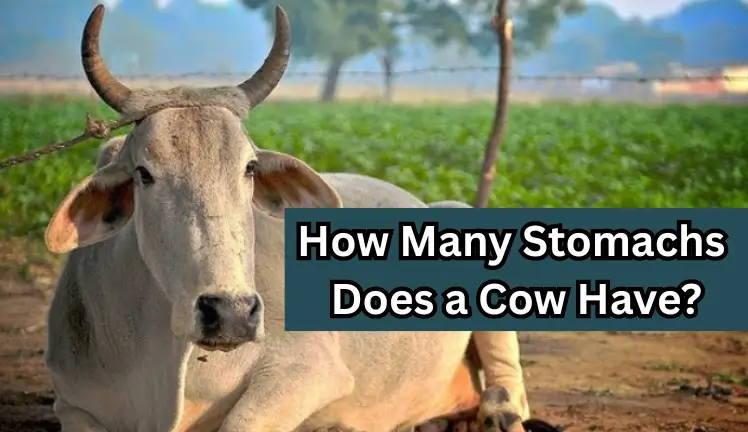How Many Stomachs Does a Cow Have? When someone says, “a cow has four stomachs,” it may sound unusual — even a little magical. But this common phrase is a simplification of a truly fascinating biological design. Cows, like other ruminants, possess a complex digestive system that enables them to extract nutrients from fibrous plant materials that most animals cannot digest.

So, does a cow really have four stomachs? Not quite. A cow has one stomach, divided into four compartments — each with a specific function. This system is the secret behind their ability to thrive on a diet of grasses, hay, and other cellulose-rich plants. Let’s explore how it all works.
The Four Compartments of a Cow’s Stomach
1. Rumen: The Fermentation Vat
The rumen is the largest of the four compartments, capable of holding up to 50 gallons of partially digested food. It serves as a fermentation chamber where billions of microorganisms — including bacteria, protozoa, and fungi — break down cellulose and other complex carbohydrates found in grass and forage. This microbial fermentation produces fatty acids that provide a major source of energy for the cow.
2. Reticulum: The Filter
Attached to the rumen, the reticulum has a honeycomb structure and acts as a filter. It traps foreign materials (like nails or wire) that the cow might accidentally swallow — a common issue that leads to a condition called “hardware disease.” The reticulum also assists in regurgitating food back into the mouth, where the cow chews its cud to further break it down.
3. Omasum: The Absorber
The omasum resembles the pages of a book due to its many folds. Its primary function is to absorb water, electrolytes, and nutrients from the digested material. It also helps in grinding down larger food particles before passing them into the final compartment.
4. Abomasum: The True Stomach
The abomasum is often referred to as the “true stomach” because it functions much like a human stomach. It secretes acids and digestive enzymes like pepsin and hydrochloric acid to break down proteins and kill any remaining bacteria from the previous chambers. This is where enzymatic digestion really begins, preparing food for nutrient absorption in the intestines.
Why Cows Need This Complex System
Cows are herbivores that rely heavily on plant-based diets, primarily made up of grass, which contains high levels of cellulose. Humans and many animals can’t digest cellulose effectively. Cows, however, through microbial fermentation and rumination (cud chewing), can convert low-nutrient roughage into energy-rich milk and meat.
This ruminant system allows cows to extract maximum nutrition from minimal resources, making them incredibly efficient at turning pasture into protein.
Myths vs. Facts
While many believe that cows have four separate stomachs, it’s more accurate to say they have a single stomach with four compartments. Each compartment plays a vital and specific role in digestion — making it a biological marvel rather than a myth.
FAQs: How Many Stomachs Does a Cow Have?
Q1. Do cows really have four stomachs?
No. Cows have one stomach with four compartments — not four separate stomachs.
Q2. What does each compartment do?
Each compartment has a unique role:
- Rumen: fermentation
- Reticulum: filtration and cud regurgitation
- Omasum: absorption
- Abomasum: enzymatic digestion
Q3. Why do cows chew cud?
Cows regurgitate food from the rumen to re-chew it, breaking it down further for microbial digestion — a process called rumination.
Q4. Is this digestive system unique to cows?
No. Other ruminants like sheep, goats, deer, and giraffes also have a four-compartment stomach.
Conclusion
Understanding how many stomachs a cow has leads us into the intricate world of ruminant digestion. The cow’s one stomach with four compartments — rumen, reticulum, omasum, and abomasum — showcases nature’s brilliance in adaptation and efficiency.
This specialized system allows cows to convert simple grasses into complex nutrients, forming the foundation of human dairy and meat production. Next time you see a cow chewing its cud, remember: it’s not just eating — it’s mastering the art of digestion.
Disclaimer: This article is for informational purposes only and does not substitute professional veterinary advice.